Liquidity pools, as we know them today, were first introduced in 2016 by Hayden Adams, the founder of Uniswap, a decentralized exchange built on the Ethereum blockchain.
I. Introduction:
Definition of DEX’s:
Explanation of Liquidity Pools:
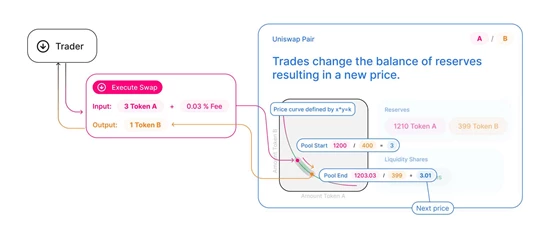
The image shown above illustrates the three primary parties:
· Liquidity Providers – create new pools, add liquidity to existing pools, and remove tokens from reserves they contribute to;
· Traders – pay the swap fee, which is effectively added to the reserve of the pool KNC/USDT; and
· Arbitrageurs – enforce an efficient price mechanism at a pool-level.
Importance of Liquidity Pools for DEX’s:
How Liquidity Pools Work:
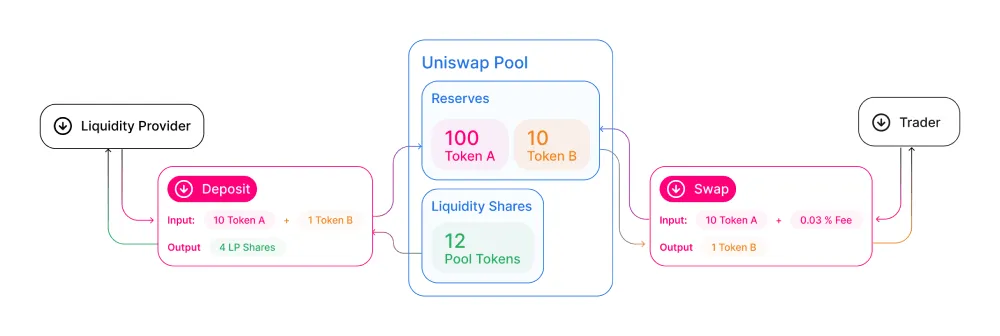
Overview of Liquidity Pools:
List of Liquidity Pools:
Here is a table that summarizes some of the popular DEXs and the blockchain networks they operate on as of my knowledge cutoff in September 2021:
| DEX Name | Blockchain Network |
|---|---|
| Uniswap | Ethereum |
| PancakeSwap | Binance Smart Chain |
| SushiSwap | Ethereum |
| 1inch | Ethereum, Binance Smart Chain |
| Kyber Network | Ethereum |
| Curve Finance | Ethereum |
| Quickswap | Polygon |
| Bancor | Ethereum |
| Balancer | Ethereum |
| Serum | Solana |
| Raydium | Solana |
| DODO | Ethereum, Binance Smart Chain |
| PulseX | PulseChain |
Pooling of Funds:
Liquidity Provider (LP) and LP tokens:
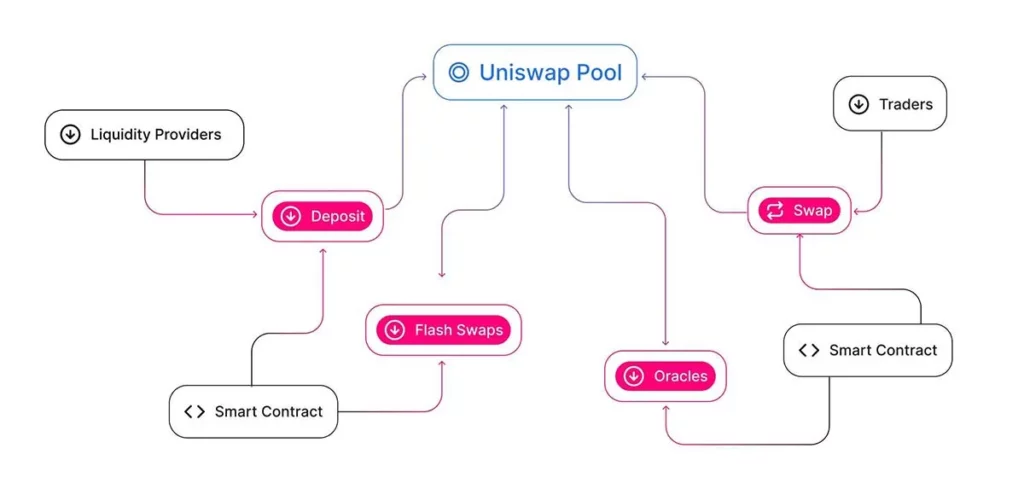
Creating a Liquidity Pool:

Choosing a DEX:
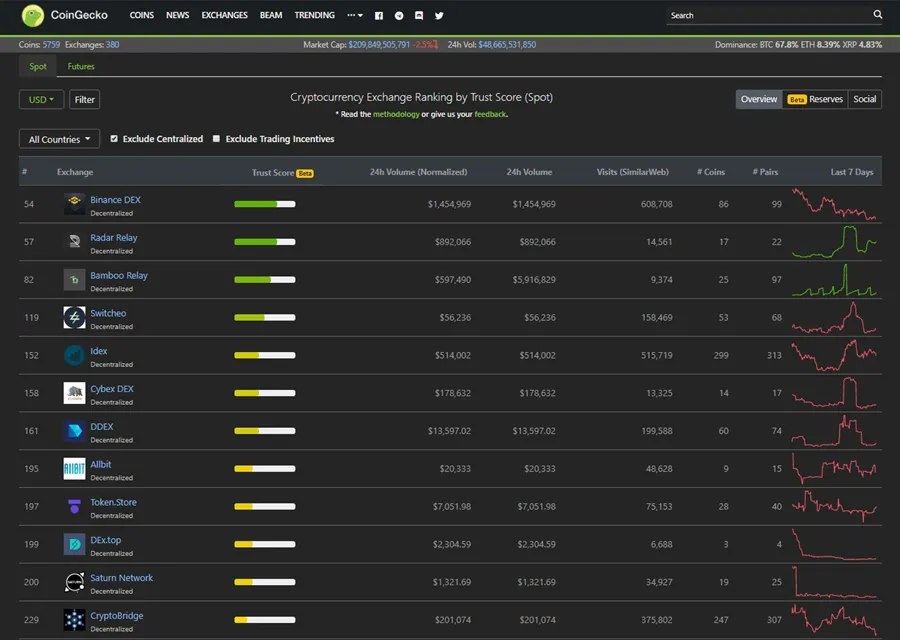
Selecting Pairs to Trade:
Calculating Impermanent Loss:
Adding Liquidity:
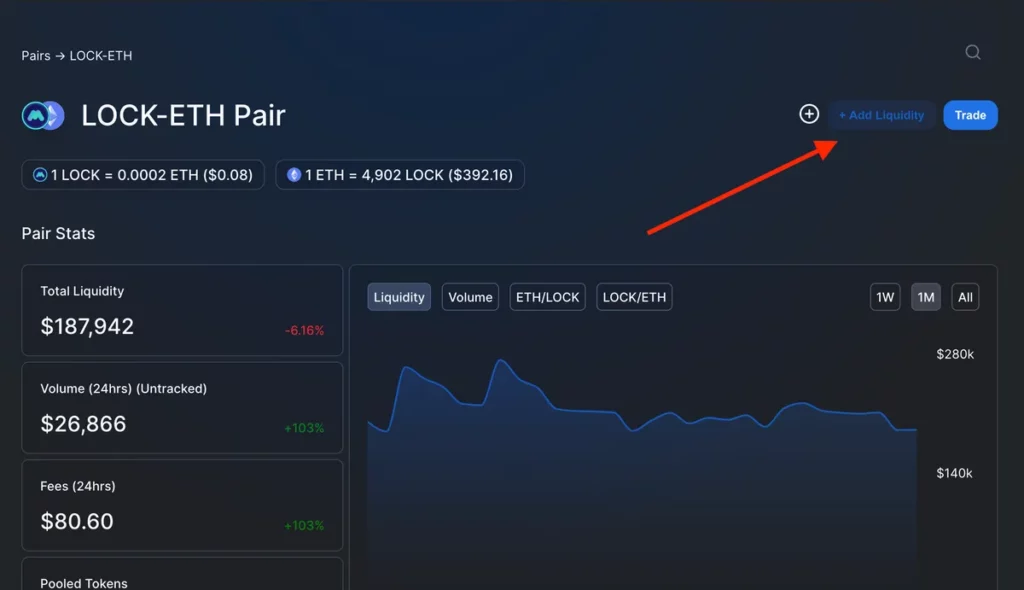
Providing Liquidity vs. Staking Liquidity:
Benefits and Risks of Liquidity Pools:
Benefits:
- Earn Passive Income:
LPs can earn a passive income by providing liquidity to a liquidity pool. They receive a share of the transaction fees generated by the pool in proportion to their share of the pool. LPs can also earn additional rewards, such as governance tokens, which can be sold or used to vote on platform decisions. - Reduced Slippage:
Liquidity pools reduce slippage, which is the difference between the expected price and the executed price of a trade. The liquidity in the pool ensures that trades can be executed at a fair price without significant price movements. - Increased Liquidity:
Liquidity pools increase the liquidity of a trading pair, which attracts more traders and increases the trading volume. Increased liquidity also reduces market volatility, providing a stable trading environment for traders.
- Earn Passive Income:
Risks:
- Impermanent Loss:
LPs are at risk of experiencing impermanent loss when providing liquidity to a liquidity pool. Impermanent loss occurs when the price of the tokens in the pool changes relative to each other, resulting in a reduction in the value of the LP’s tokens. - Potential Loss of Funds:
LPs risk losing their funds if the value of the tokens in the liquidity pool decreases significantly. LPs should be aware of the potential risks and calculate the potential losses before contributing liquidity to a pool. - Unpredictable Market Conditions:
The cryptocurrency market is highly volatile and subject to unpredictable market conditions, such as flash crashes, network congestion, and liquidity crises. LPs should be prepared to monitor the market and adjust their liquidity provision accordingly.
- Impermanent Loss:
Liquidity Provision Strategies:
- Equal Value:
The equal value strategy involves depositing an equal amount of two different tokens into the liquidity pool. This strategy is straightforward and ensures that the LP’s share of the pool is balanced. - Concentrated Value:
The concentrated value strategy involves depositing a higher proportion of one token than the other token into the liquidity pool. This strategy is useful when one token is expected to have more trading volume or volatility than the other token.
- Equal Value:
Liquidity Provision Strategies:
- Impermanent Loss Mitigation:
Impermanent loss is a risk that LPs face when providing liquidity to a liquidity pool. Impermanent loss mitigation strategies involve hedging against impermanent loss by purchasing put options or taking positions in the market that are opposite to the liquidity pool’s exposure. - Yield Farming:
Yield farming involves using LP tokens as collateral to earn additional rewards, such as governance tokens or interest. This strategy allows LPs to maximize their earnings from their liquidity provision.
- Impermanent Loss Mitigation:
Benefits and Risks of Liquidity Pools:
Conclusion:
Summary of Liquidity Pools for DEX’s:
Future of Liquidity Pools and DEX’s:
Final Thoughts:
DEFINITIONS:
Decentralized exchanges (DEXs): These are peer-to-peer trading platforms that allow users to trade cryptocurrencies directly with each other without the need for intermediaries. DEXs operate on a blockchain network and utilize smart contracts to execute trades. Unlike centralized exchanges, DEXs do not store user funds, and trades are not processed through a central authority.1
Liquidity pools: These are a collection of funds deposited by liquidity providers (LPs) on a DEX, which are used to facilitate trades between different cryptocurrencies or tokens. LPs contribute to the liquidity pool by depositing equal amounts of two different tokens, which are then used to create a trading pair. Liquidity pools can also be used to create single-token pools, where a token is deposited as the only asset in the pool.2
Liquidity providers (LPs): These are individuals or entities that provide liquidity to the DEX by depositing tokens into liquidity pools. They earn a share of the transaction fees generated by the liquidity pool proportional to their share of the liquidity pool. LP tokens represent the LP's contribution to the liquidity pool and are used to track their ownership of the pool.3
Impermanent loss: This is the potential loss of value that liquidity providers (LPs) may experience when providing liquidity to a liquidity pool. Impermanent loss occurs when the value of the tokens in the liquidity pool changes relative to each other.4
Slippage: This is the difference between the expected price and the executed price of a trade. Liquidity pools reduce slippage by ensuring that trades can be executed at a fair price without significant price movements.5
Yield farming: This involves using LP tokens as collateral to earn additional rewards, such as governance tokens or interest. This strategy allows LPs to maximize their earnings from their liquidity provision.6
Decentralized finance (DeFi): This refers to the use of blockchain technology to enable financial services and applications that are decentralized, transparent, and open to everyone. DeFi platforms aim to provide traditional financial services such as lending, borrowing, and trading without relying on intermediaries such as banks.7
Keep yourself updated with the latest news and developments by following these channels:
HowToPulse on Twitter:
https://twitter.com/howtopulse
RichardsCalls on Telegram:
https://t.me/RichardsCalls
Richard Heart’s Twitter account:
https://twitter.com/RichardHeartWin
Official PulseChain Twitter account:
https://twitter.com/PulseChainCom
Richard Heart’s official YouTube channel:
https://youtube.com/RichardHeart
Richard Heart’s official Instagram account:
https://Instagram.com/RichardHeartOfficial
*** Cryptocurrencies and NFTs are volatile and those who invest in them should be prepared to lose all their money. NOTHING www.howtopulse.com states, shares, expresses, or allude to should be considered professional advice or recommendations of action. This blog is intended for educational and entertainment purposes only. Consult a professional (or two…or more) for any tax, accounting or legal related questions you may have. Howtopulse did not receive any payments to write this blog or any other post on this site***

